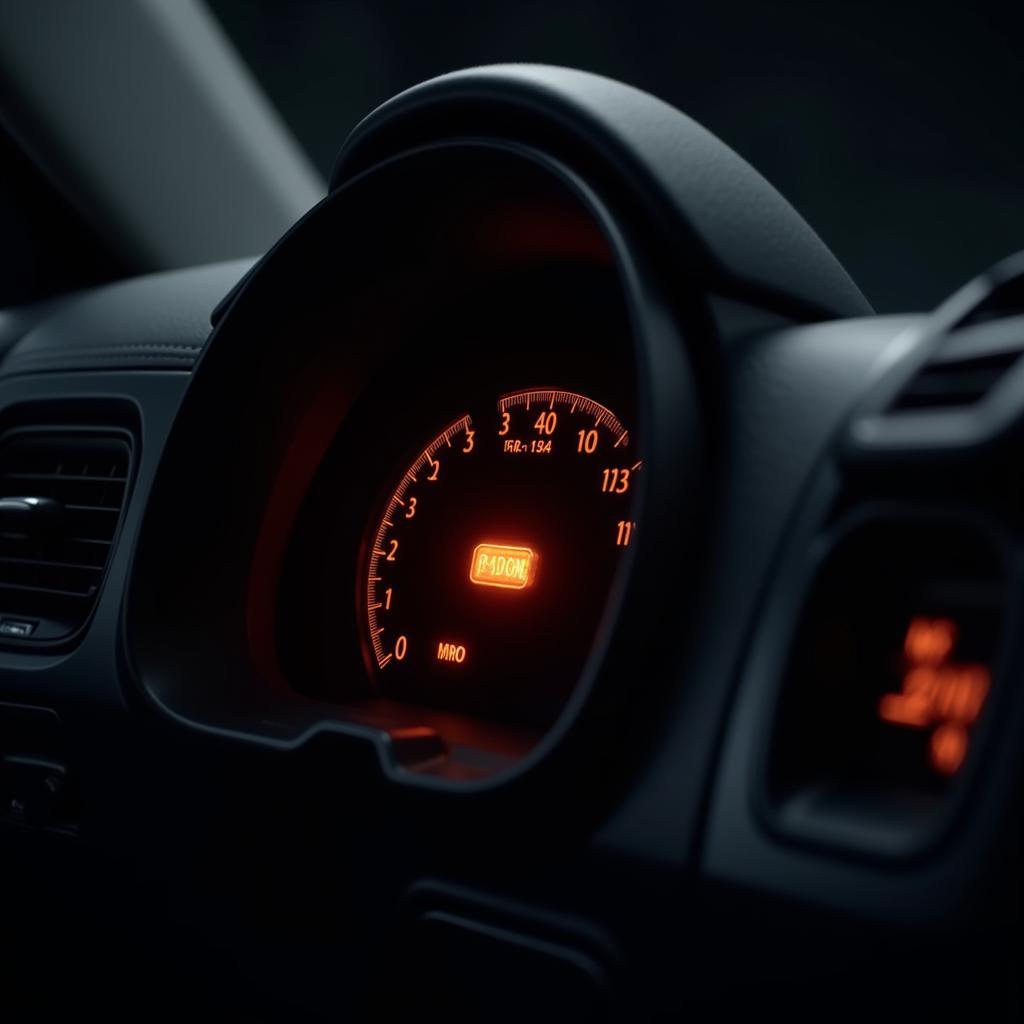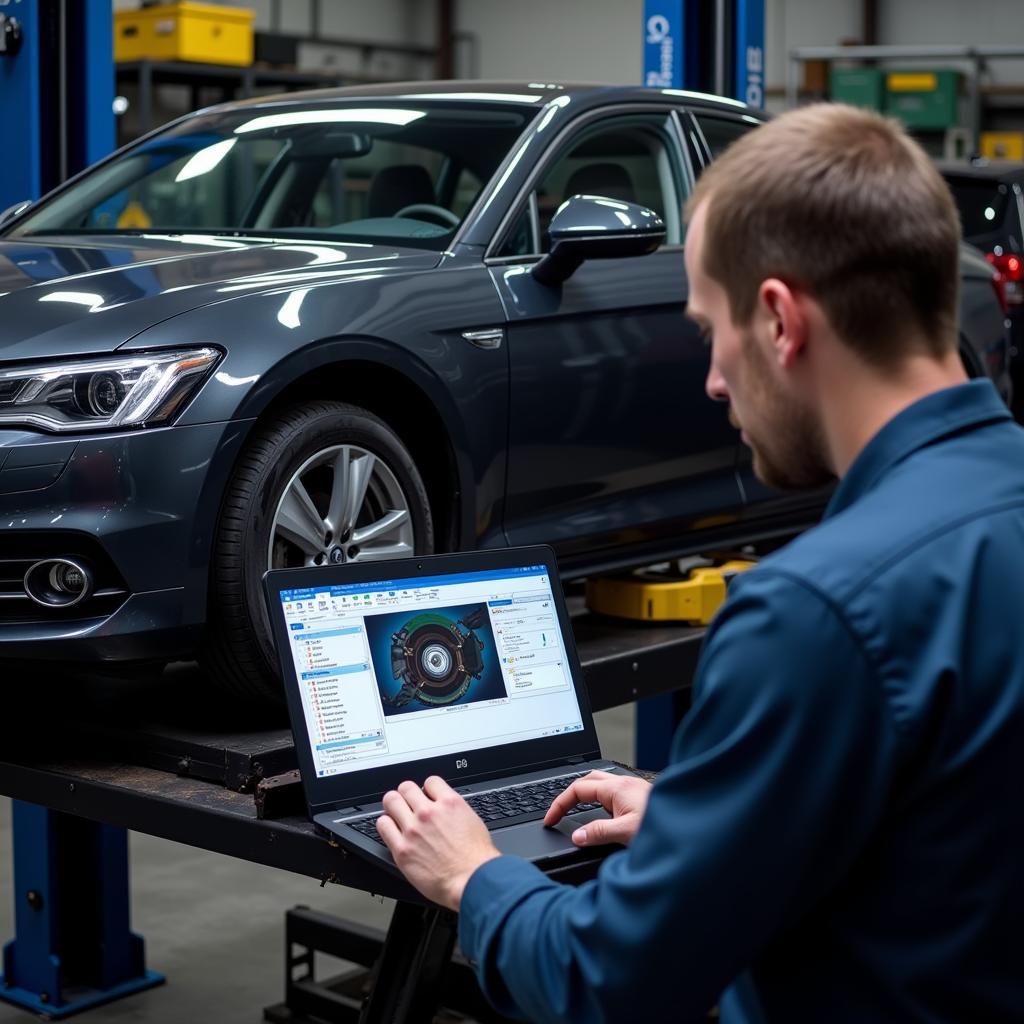Modern vehicles are equipped with sophisticated systems designed to monitor various components, including your brakes. So, do new cars notify you if brakes are worn? Yes, most new cars will alert you to worn brakes, offering a significant safety advantage. However, the specific way they notify you can vary, and understanding these methods is crucial for maintaining your vehicle and ensuring your safety on the road.
How Do New Cars Indicate Brake Wear?
New cars typically employ a combination of methods to inform drivers about worn brakes. These can include visual warnings, audible alerts, and even haptic feedback through the brake pedal. The specific methods and their sensitivity can vary depending on the make and model of the vehicle.
Indicator Lights on the Dashboard
The most common way new cars notify you of worn brakes is through a dashboard indicator light. This light is often a symbol resembling a circle with parentheses around it, sometimes with an exclamation point in the center. This symbol universally represents the braking system, and when illuminated, indicates a potential issue. This could be anything from low brake fluid to worn brake pads.
Audible Warnings
Some vehicles go beyond a simple visual warning and incorporate audible alerts. These might be a chime or a beeping sound that coincides with the illumination of the brake warning light. This added layer of notification is especially helpful for drivers who might momentarily overlook the dashboard.
Haptic Feedback Through the Brake Pedal
In some more advanced vehicles, you might experience haptic feedback, or vibrations, through the brake pedal. This is a less common but increasingly popular method, providing a tactile warning that is difficult to ignore. This often indicates that the brake pads are nearing the end of their lifespan and require immediate attention.
 Brake Warning Light on Car Dashboard
Brake Warning Light on Car Dashboard
Understanding Brake Pad Wear Sensors
Many modern vehicles are equipped with brake pad wear sensors. These small sensors are embedded within the brake pads themselves and are designed to contact the brake rotor when the pad material wears down to a critical level. This contact completes an electrical circuit, triggering the warning light on your dashboard.
Types of Brake Pad Wear Sensors
There are two main types of brake pad wear sensors: mechanical and electrical. Mechanical sensors are simpler and typically make a scraping or squealing sound when the pads are worn. Electrical sensors, as described above, trigger a warning light on the dashboard. Some vehicles might even utilize both types for redundancy.
The Importance of Regular Brake Inspections
While these warning systems are valuable safety features, they shouldn’t replace regular brake inspections. It’s crucial to have your brakes checked by a qualified mechanic at recommended intervals, typically as part of your regular vehicle maintenance schedule.
What to Do When You Get a Brake Warning
If your car notifies you of a brake issue, it’s crucial to take action promptly. Ignoring these warnings can lead to further damage, compromised braking performance, and potentially dangerous driving situations.
- Check your brake fluid level. Low brake fluid can also trigger the warning light. Top it off if necessary, but if it continues to drop rapidly, it could indicate a leak requiring professional attention.
- Listen for unusual noises. Squealing, grinding, or clicking sounds coming from your brakes indicate a problem that needs immediate attention.
- Schedule a brake inspection. Even if you don’t hear any unusual noises or notice any performance issues, it’s wise to have your brakes inspected by a professional as soon as possible.
Remote Diagnostics and Software Solutions
With advancements in automotive technology, remote diagnostics and software solutions are increasingly used to identify and address brake-related issues. Trained technicians can access your vehicle’s data remotely to pinpoint the problem and potentially resolve it through software updates or adjustments, saving you time and money.
“Remote diagnostics can be incredibly useful in identifying the root cause of brake problems quickly,” says John Smith, Senior Automotive Diagnostic Technician at Advanced Auto Solutions. “This allows us to provide targeted solutions and minimize downtime for the vehicle owner.”
 Mechanic Using Remote Diagnostic Software for Brake Check
Mechanic Using Remote Diagnostic Software for Brake Check
Conclusion
Do new cars notify you if brakes are worn? Absolutely. Modern vehicles employ various methods, from warning lights and audible alerts to haptic feedback, to inform you about potential brake issues. However, these systems are not foolproof. Regular maintenance and prompt attention to any warning signs are essential for ensuring optimal braking performance and your safety on the road. Don’t delay – address any brake concerns immediately to avoid potentially dangerous situations.
“Regular brake checks are not just about safety; they’re also about preventing more costly repairs down the line,” adds Maria Garcia, Lead Mechanic at Precision Auto Care. “Catching issues early can save you significant money and hassle in the long run.”
FAQ
- How often should I have my brakes checked? It’s generally recommended to have your brakes inspected at least once a year or every 12,000 miles, whichever comes first.
- What does the brake warning light mean? The brake warning light can indicate several issues, from worn brake pads to low brake fluid or a problem with the ABS system.
- Can I drive with the brake warning light on? While you might be able to drive a short distance, it’s not recommended. Driving with a brake warning light on can be dangerous and could lead to further damage.
- How much does it cost to replace brake pads? The cost of brake pad replacement varies depending on the make and model of your vehicle but typically ranges from $150 to $300 per axle.
- What are the signs of worn brake pads? Squealing, grinding, or clicking noises, a spongy brake pedal, and vibrations when braking are all signs of worn brake pads.
- How long do brake pads last? Brake pad lifespan varies depending on driving habits and conditions, but they typically last between 25,000 and 70,000 miles.
- Can I replace my brake pads myself? While it’s possible, replacing brake pads is a safety-critical task and is best left to qualified mechanics.

